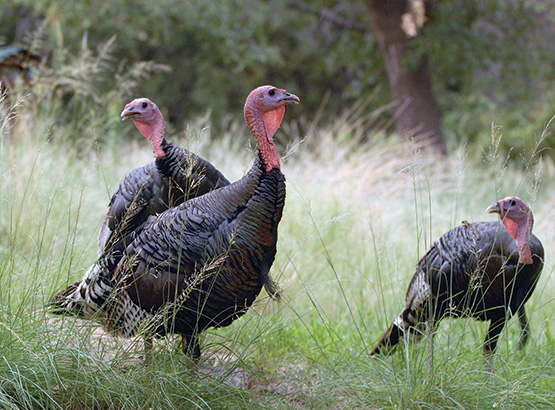Turkey
Arizona is home to three subspecies of turkeys:Merriam’s, Gould’s, and Rio Grandes. Merriam’s turkey are found throughout the Western United States primarily in the ponderosa pine forests of Colorado, New Mexico, and northern Arizona. Gould’s turkeys are one of Arizona’s two native wild turkey species. Rio Grande turkey were recently introduced on the Arizona Strip at Black Rock Mountain.

About
During winter Merriam’s turkey congregate in the pinyon pine-oak habitats at the interface with ponderosa pine. If weather permits they may even winter in the ponderosa pine. Deep snow forces them to move to lower elevations. During spring snow melt, they again move up slope following the snow line and breeding activity begins. Toms begin to gobble and form harems. After mating, hens move into denser habitat at higher elevation to lay and incubate eggs.
Hunt History
Wild turkeys have been classified as big game since 1913 when the first state legislature established a bag limit of three birds to be taken between October 1 and December 15. Turkey populations appeared to hold up fairly well, at least in northern Arizona, as the season was still a month long and the bag limit was only reduced to two in the new “game code” of 1929. After World War II, however, hunt pressure gradually increased, and hunt regulations became more stringent. Fall hunting was the only turkey hunting allowed, and by 1950 a hunter had to draw a permit to even hunt turkeys. Annual harvests ranged from a few hundred birds to more than 1,300.

Our Mission
To conserve Arizona’s diverse wildlife resources and manage for safe, compatible outdoor recreation opportunities for current and future generations.
Hunt Regulations
Rules and regulations for hunting in Arizona.
Regulations for spring hunts, fall hunts and pronghorn, elk hunts.
